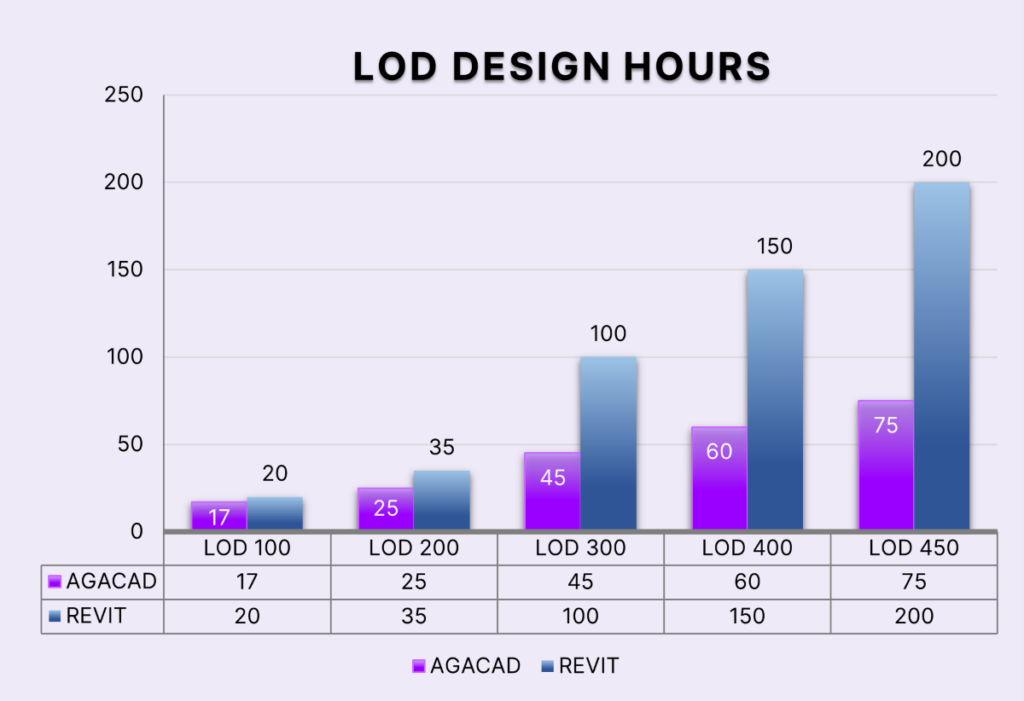When it comes to digital building models with a high level of detail (LOD), it’s hard to find anyone anywhere in the world as experienced and efficient as Geoffrey Jennings.
The US-born Paris-based consultant heads BIModular, a provider of building information modelling (BIM) services specializing in design automation for modular fabrication, assembly and construction.

Geoffrey himself, with 25 years of experience, has helped design structures of all types (more than 6 million sq. ft., or about 600,000 sq. m.) in North America, Europe and Asia. A recent one is 5 stories and 580,000 sq. ft. with 578 volumetric modules, all precise to 1/16 of an inch. BIModular supports modular building work with wood, cold formed steel, structural steel and precast concrete systems.
One of the secrets to Jennings’s success is a “hybrid” approach to LOD. For high-quality and highly efficient Design for Manufacturing and Assembly (DfMA).
The other, related secret is Agacad, he says in an interview. He says that in his experience Agacad’s software for Autodesk® Revit® outperforms rivals 10 to 1 for higher LODs.
Projects with multiple LODs
“Excessive data in BIM projects hinders design efficiency and causes confusion. I advocate for a lean, hybrid LOD approach, focusing on the minimum of essential data to do the job and avoiding model bloat,” Jennings begins, adding: “People often create a data dumpster, throwing in everything they think someone might need. The reality is that 80% of needs are met by just a few parameters.”
He insists no project should be stamped with a single LOD standard.
“It’s not effective to make everything LOD 300 or LOD 400. Break projects into tiers. The right LOD varies within a project depending on downstream user needs. Deciding what to represent visually in exacting detail and what can be conveyed through text or simplified visuals is crucial,” he says.

Framing and MEP systems typically demand the highest LODs, he explains, since nearly every trade will interact with those systems during construction. For other elements, lower LODs often suffice.
Breaking down projects like this reduces costs. “You’ll realize you only need to do LOD 400 about 50% of the time; the rest can be LOD 200 for example. That affects your budget,” Jennings notes.
Agacad’s solutions for Revit greatly facilitate this approach. “They enable each discipline to create the level of detail needed. You can define rules to optimize your LOD, to get precise data and structure it well. Agacad lets you push out just what you need – from simple data, where that’s enough, to hyper-complex data when necessary.”
Returns that rise
Extensions for Revit create more and more value for projects as LOD increases, Jennings argues. At least that is very true for Agacad tools, where returns on the initial investment multiply, he says.

“Back in 2018, I was doing LOD 400+ designs for clients. Frustrated about efficiently managing high LOD models, I revisited Agacad and saw how far ahead it was,” he recalls.
Agacad products show their real power as you evolve to a more granular level of BIM, he says.
“They outperformed other competing software by a factor of 5 even with me being a power user [of the other tools]. Thus, with MWF by Strucsoft it took me 100 hours of work to hand over a particular project, while a comparable project using Agacad only took 20 hours. It was smarter, faster, and saved my hand from the damage of a lot of mouse clicking. My clients were surprised by the speed of revised drawings back to their office.”
Benefits far beyond design
Higher LODs are very important, he stresses. “A lower LOD may expedite design, but it carries higher risk of design and field errors. Higher LOD levels may extend design timelines, but they result in faster building construction, fewer delays, and fewer change orders.”
Thus, the returns on investing in tools to facilitate LOD work go well beyond quicker design.
“Less design time is just a small part of the savings that optimal LOD brings, since all the data and visual representations impact people downstream. The right LOD means less rework, better information for engineering, fabrication, delivery, etc. These aspects combined far outweigh just design efficiency. It’s the value of clear communication: there’s less risk, less cost, faster completion.”
Some of the clients Jennings advises have even been able to reduce the size of their design teams while increasing output. “That’s a testament to the effectiveness of Agacad’s solutions, which are a valuable way for design firms and trades to introduce ‘lean LOD’ into their project scopes.”
Jennings notes that he is open to sharing his insights and expertise on optimizing LOD and getting maximum value for Agacad tools and solutions. “I’m available. Reach out,” he says.







